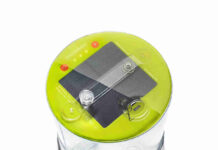
Solar Windows Technologies as electricity collectors
Solar windows technologies are revolutionizing the way we think about renewable energy. These innovative windows are designed to generate electricity by harnessing the power of the sun. By integrating photovoltaic technology into the window panes, they can convert sunlight into usable electricity, reducing reliance on traditional energy sources.
Solar Windows Technologies are incorporated into window glass, being able to change the future in architecture, urban planning and electricity generating, said the Australian researchers team in the Elsevier Journal called Nano Energy in 2020.
The group of researchers led by Professor Jacek Jasieniak of Monash University and the ARC Center of Excellence in Exciton Science, have succeeded in producing state-of-the-art perovskite solar photovoltaic cells that generate electricity when light passes through. This research topic was also financially supported by the Australian Renewable Energy Agency.
With the help of Solar Windows Technologies and by an ingenious design, these windows will be sources of electricity. Two square meters of a window will be able to generate electricity just like a standard solar panel.
Given the important effect of the sun’s rays, designers who want to use this type of built-in solar cells windows will have to reconsider the position of the buildings, in order to optimize the way, the walls catch light for as long as possible during a day.
Solar cell windows an old idea now better optimized
The idea of semi-transparent solar cell windows is not a new one, but this time constructive solutions were tried to bring the production prices in the reasonable level, ensuring the energy efficiency and reliability of the product to be optimized.
The research team has used an organic semiconductor that was transformed into a polymer, using it to replace Spiro-OMeTAD an element commonly used in the construction of solar photovoltaic cells, which is quite unstable because it causes aqueous coating, but in the combination chosen by Professor Jacek, this replacement produced unexpected results, as well as a conversion efficiency between 15 and 20 percent.
These semi-transparent solar photovoltaic cells have an average conversion efficiency of 17 percent while transmitting more than 10 percent of the received light.
Solar cell windows will be an attractive factor for future building owners, but also a challenge for designers, architects, builders and engineers. In addition to the positive aspects of the idea, there is a compromise, explains Professor Jasieniak.
These semi-transparent solar cells windows generate more electricity the opaquer they are. Solar windows, identical to the current commercial glazed ones, generate approximately 140 watts, electrical power per square meter.
The first attempts of using windows with semi-transparent solar cells windows should be made in malls, buildings with several shops. However, large-area windows are expensive, to which will be added the additional cost, those of incorporating these semi-transparent solar photovoltaic cells. Despite these expenses, the building will produce a part of the necessary electricity, ensuring a slow amortization of the investment.
Going beyond the research phase, they are now in the stage where this new technology could be launched on the market through Australia’s largest glass manufacturer, Viridian Glass. Jatin Khanna, the operational manager of Viridian Glass, underlined that the development of such windows with semitransparent solar cells windows presents an opportunity, which could later translate into other innovations and new technologies for processing and use of glass.
The researcher team is focusing to expand at next level
Dr. Anthony Chesman, co-author and member of the CSIRO research team, said the entire team is now working to expand the manufacturing process. This means a production simulation that can then be replicated to an industrial system, so that the technology is simple and easy to implement.
The first commercial semi-transparent solar cells windows will enter the market depending on how successful the scaling of the technology will be, the expectations of the research team are that this will happen sooner than 10 years.
Their next project is a tandem device in which perovskite solar cells windows will be used as the lower layer and organic solar cells in the upper layer.
Benefits of Solar Cell Windows
Energy Generation: Solar Cell windows produce clean and renewable energy right from your windows, allowing you to reduce your carbon footprint and contribute to a more sustainable future.
Cost Savings: By generating your electricity, you can potentially reduce your energy bills and save money in the long run. Solar cell windows offer a viable alternative to traditional solar panels, especially for buildings with limited roof space.
Aesthetics: Solar windows seamlessly blend with the architectural design of your building, providing a sleek and modern appearance. They are available in various styles and sizes to suit different preferences and building types.
Versatility: Solar windows can be installed in residential, commercial, and industrial buildings, offering a versatile solution for energy generation. They can be retrofitted into existing structures or incorporated into new construction projects.
Considerations for Solar Windows Technologies
Initial Investment: While solar cell windows offer long-term cost savings, the initial installation cost can be higher compared to conventional windows. However, the return on investment through energy savings can offset the upfront expenses over time.
Orientation and Shading: The efficiency of solar windows depends on their orientation and exposure to sunlight. It’s essential to consider factors such as building orientation, nearby structures, and shading to maximize energy generation.
Installation and Maintenance: Proper installation by qualified professionals is crucial to ensure optimal performance. Regular maintenance, including cleaning the windows and monitoring the system, is necessary to maintain their efficiency.
Regulatory Considerations: Before installing solar windows, it’s important to check local regulations, permits, and incentives related to solar energy systems. Understanding the legal and financial aspects will help ensure a smooth installation process.
Solar cell windows offer an innovative and sustainable solution for clean energy generation. They combine functionality and aesthetics, providing a dual-purpose window that generates electricity while allowing natural light into your space. Consider the benefits and considerations mentioned above to determine if solar windows are the right choice for your energy needs.
Remember, renewable energy is not only beneficial for the environment but also a wise investment in the future. Embrace the power of the sun with solar cell windows and contribute to a greener world.



